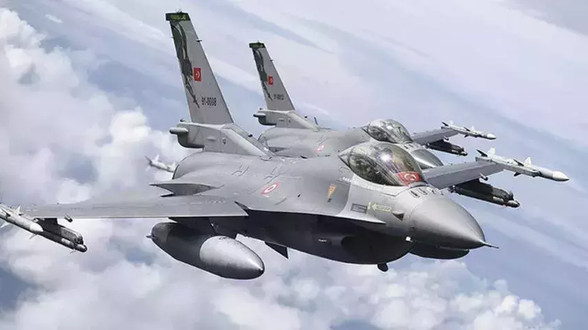
Date: 2025-10-14 Page is: DBtxt003.php txt00026382
MILITARY AIRCRAFT
USA ... F-16
Via QUORA March 2024 ... When and why did the F-16 air frame change?
USA ... F-16
Via QUORA March 2024 ... When and why did the F-16 air frame change?
Original article:
Peter Burgess COMMENTARY
Peter Burgess
Rebecca Williams ... Aircraft Lover
Feb 2 2024
The F-16 Fighting Falcon is one of the most successful and versatile jet fighters in the world. It has been in service since 1978 and has undergone several changes and upgrades over the years. The F-16 airframe, which is the structure and shape of the aircraft, has also changed to accommodate new technologies and capabilities.
The first major change in the F-16 airframe occurred in the mid-1980s when the Block 15 aircraft were introduced. These aircraft featured larger horizontal stabilizers, which are the movable surfaces at the tail that control the pitch and yaw of the aircraft. The larger stabilizers improved the stability and maneuverability of the F-16, especially at high angles of attack. Block 15 also added two hard points to the chin inlet, which is the opening at the front of the aircraft that allows air to enter the engine. The hardpoints are attachments that allow the aircraft to carry weapons or equipment. The chin inlet hardpoints increased the payload capacity of the F-16 and enabled it to carry targeting pods, jamming pods, or extra fuel tanks. Block 15 also improved the radar, the radio, and the underwing hardpoints of the F-16.

The second major change in the F-16 airframe occurred in the late 1980s when the F-16C and F-16D aircraft were developed. These aircraft were the single-seat and two-seat versions of the F-16, respectively, and incorporated the latest cockpit control and display technology. The F-16C/D also had a redesigned wing, which was thicker and stronger than the previous wing. The new wing increased the fuel capacity, the range, and the performance of the F-16.
They also had a bulged spine, which is the raised section behind the cockpit that houses additional avionics and equipment. The bulged spine enhanced the electronic warfare, navigation, and communication systems of the F-16. The F-16C/D also had a modified air intake, which was wider and more curved than the original intake. The new intake improved the airflow and the efficiency of the engine, especially at high speeds and altitudes.

The third major change in the F-16 airframe occurred in the 2000s when the F-16E and F-16F aircraft were produced. These aircraft were also known as the F-16 Block 60 or the F-16 Desert Falcon and were designed for the United Arab Emirates Air Force. The F-16E/F had a new radar, the AN/APG-80, which was an active electronically scanned array (AESA) radar. This type of radar uses a grid of small antennas that can scan the sky electronically, without moving mechanically. The AESA radar provides better detection, tracking, and targeting capabilities than the previous radars.
The F-16E/F also had a new engine, the F110-GE-132, which was more powerful and reliable than the previous engines. The new engine increased the thrust, the speed, and the acceleration of the F-16. They also had a conformal fuel tank (CFT), which is a fuel tank that is attached to the fuselage and follows its shape. The CFT increased the fuel capacity and the endurance of the F-16, without affecting its aerodynamics or stealth. The F-16E/F also had a new electronic warfare suite, a new helmet-mounted display, and a new cockpit.